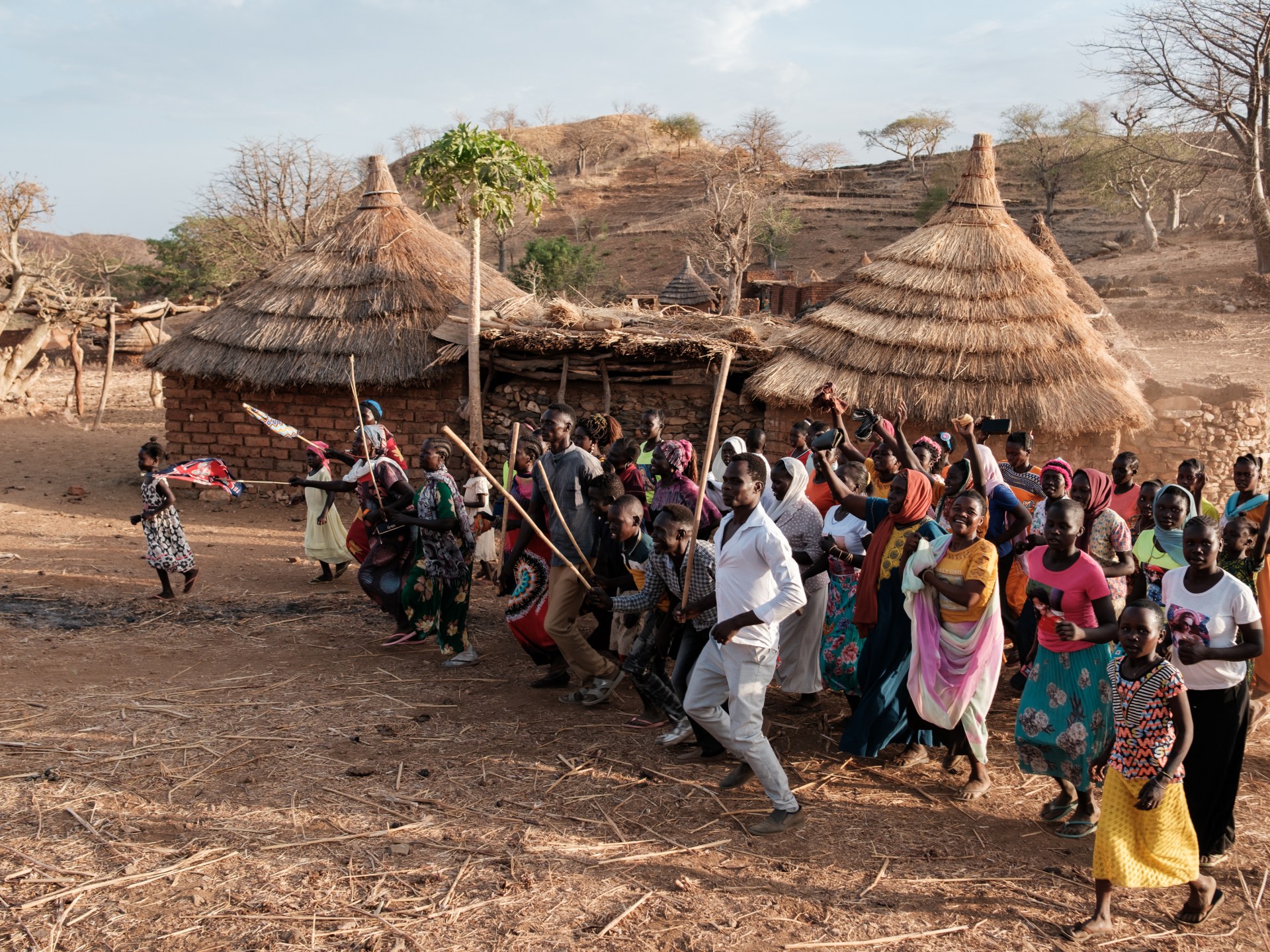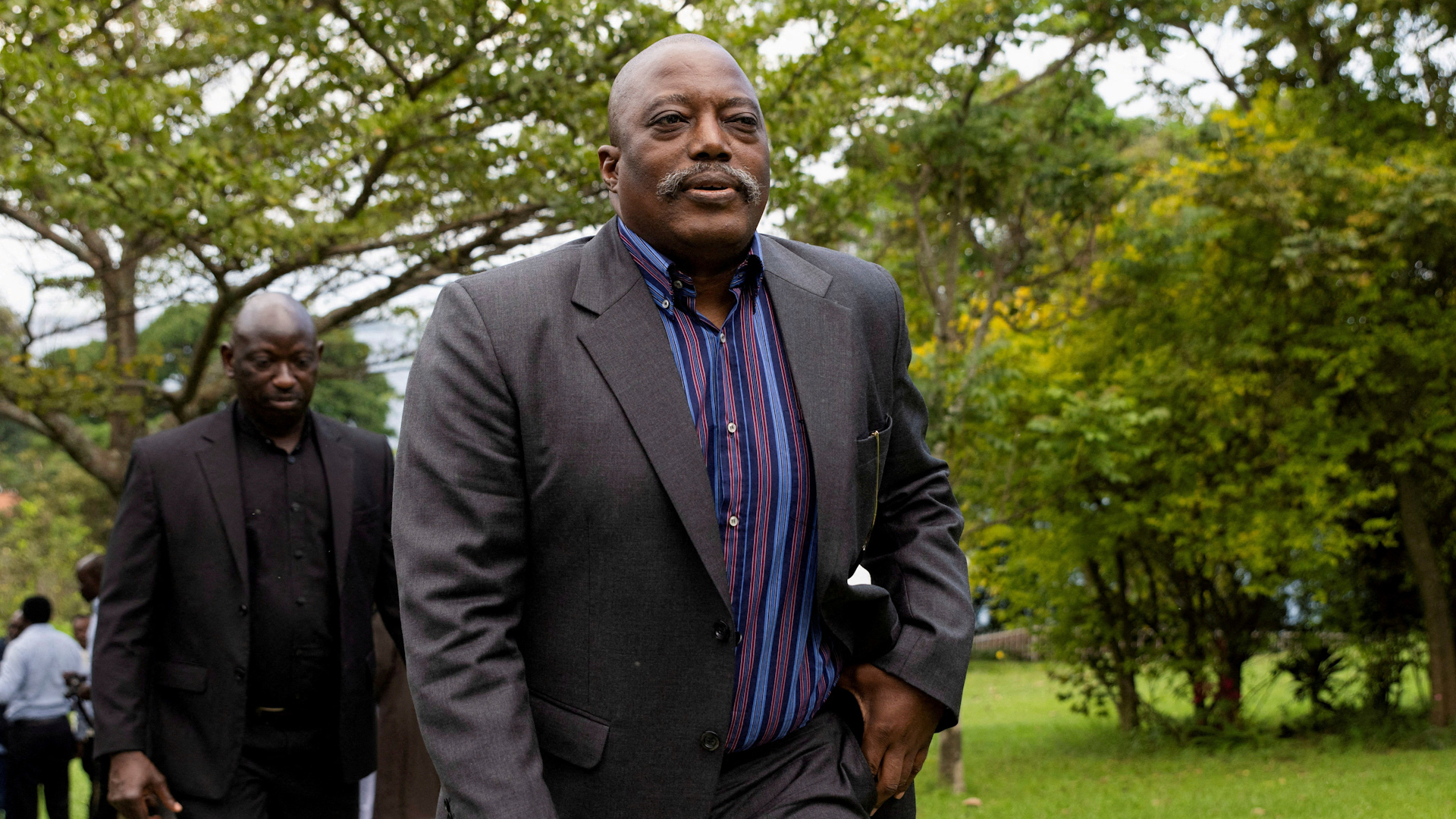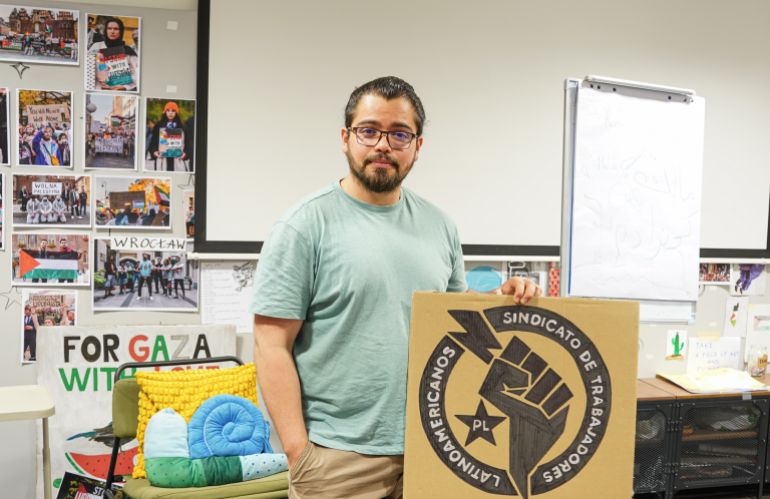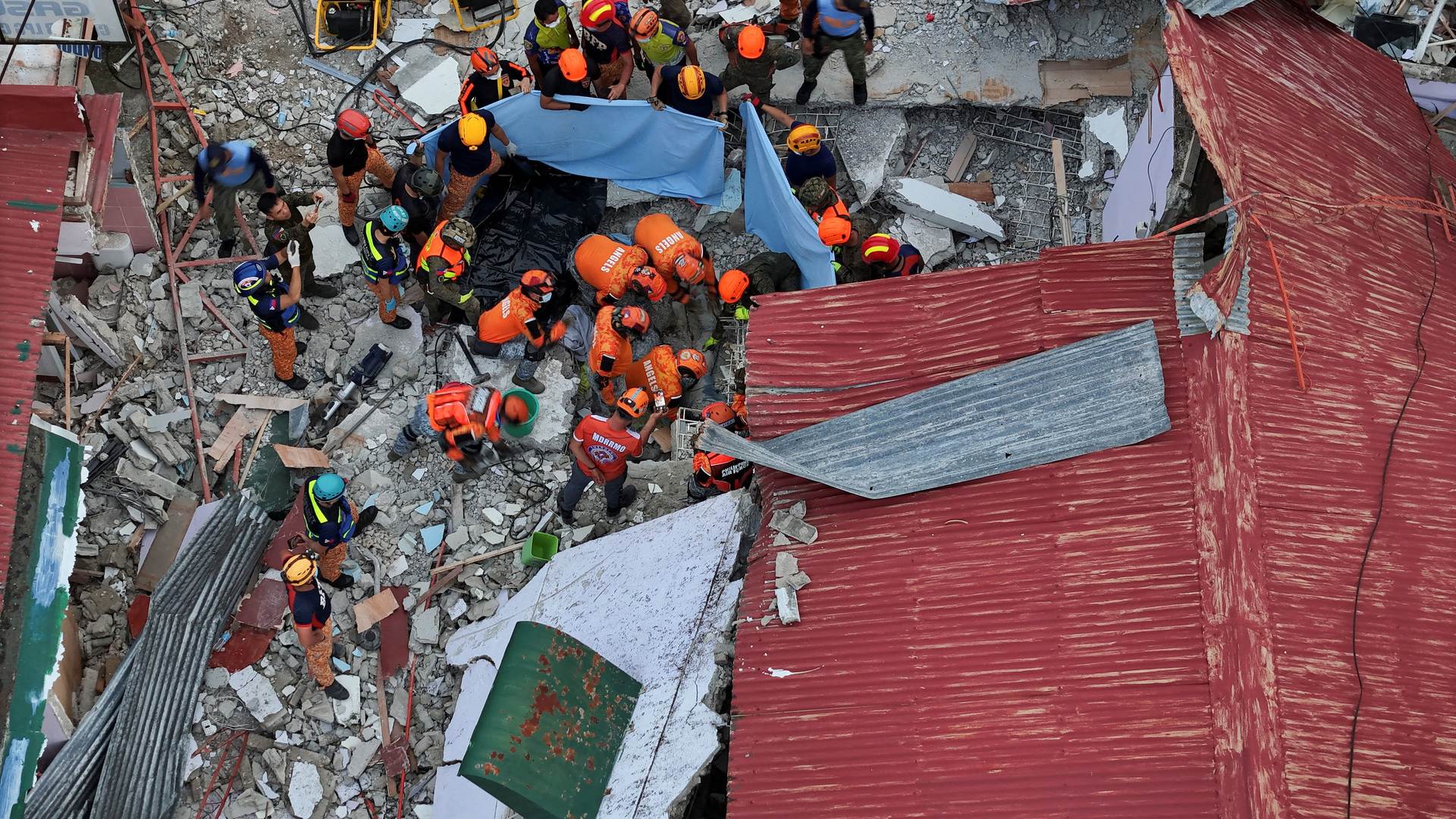Published On 1 Oct 2025
LIVE: Barcelona vs PSG – UEFA Champions League


Published On 1 Oct 2025

Published On 1 Oct 2025
The vast and rugged Nuba Mountains in Sudan, which extend southward in the region’s South Kordofan region, are characterized by rocky hills and dispersed huts.
After the rebel group in charge, the Sudan People’s Liberation Movement-North (SPLM-N), the government in charge, fought for autonomy in the mountains for decades, the region’s Nuba people have been subject to constant pressure from the government in Khartoum, who have been starving and bombarding them for decades.
The local population has been stung even more by paramilitary Rapid Support Forces (RSF) ethnic cleansing campaigns in recent years.
The SPLM-N then allied with the RSF, a group accused of genocide, war crimes, and ethnic cleansing, to take control of the nation from the Sudanese Armed Forces (SAF) since 2023, at the start of this year.
Residents of the Nuba Mountains expressed mixed emotions and deep resentment about the pact.
Some residents are suspicious of the decision, while others are afraid to speak out loud and rely on their leaders’ convictions to restore peace in the area.
Many people believe the alliance will lead to stability and peace, something that was desperately needed after decades of persistent wars.
The Nuba Mountains have experienced hunger before, and now that the new alliance may have caused more fighting, its spectre is growing.
Famine broke out in some of the mountains in 2024 as a result of aid blockades by the warring parties, failed harvests, and locust swarms.
Since the war started in the region in 2023, the local communities and the more than one million internally displaced people who have moved in have survived on leaves and scraps and are still unprepared for food.
Doctors in the area issue warnings about a siloed mental health crisis affecting the displaced and report a rise in malnutrition, particularly in children and pregnant women.
Yet despite this destruction, a strong spirit of solidarity pervades. Communities support one another across all boundaries of their religious convictions and geographical boundaries.

Following a communications blackout in Afghanistan, the Taliban has vowed to implement a nationwide internet ban. Although the organization has previously cut internet to combat “immorality,” a spokesman claims that new cables are being replaced. Locals claim that there were negative effects on businesses and education.
Published On 1 Oct 2025

Former President Joseph Kabila was charged with supporting rebels in Rwanda and given a death sentence in absentia by a military court in the Democratic Republic of the Congo.
Published On 1 Oct 2025

Poland’s Blaszki, a villager in central Poland, was filled with trembling as the 44-year-old mother of three sat in the bathroom of a crumbling country house.
Her heart beat beating, and her breath was shallow. Five of her Colombian coworkers and a man from the agency she was employed had waved a gun at her moments earlier. It was August 2023.
list of 4 itemsend of list
When a man reaches for his gun in my country, Mexico, because he wants to use it, she told Al Jazeera. “I believed I would die there, that my body would be thrown into the cornfields, and that I would never see my children again,” he said.
The agency representative first reported that due to staff shortages, the Plukon chicken processing plant’s shifts would be extended to 12 hours. The group had declined and demanded money from them. Following a heated discussion, The man then made a gun grab.
The shooter was a Ukrainian, according to Al Jazeera after reviewing the video of Flores’ ordeal that one of the workers had taken. The man then worked for a contractor who collaborated with Jober24, a temporary staffing agency that provided Plukon.
The man in question enters his car and pulls a gun in the video after a physical fight with one of the Colombian workers. He threatens to call the authorities while cursing the migrants in Polish.
He claims, “If the police come, you will get the f*** out of the country.” Undocumented were four of the group’s members.
Before 2022, Polish factories, farms, and food plants were run by Ukrainians with temporary permits. However, Ukrainian refugees have had better employment opportunities since Russia’s full-scale invasion. Temporary work organizations began hiring from other places in search of cheap labor.
Latin America replaced it with new information. While already in Poland, citizens of Colombia, Peru, Mexico, and other regions of the region can enter without obtaining a visa, stay for three months, and apply for work permits.
This changed when a new law was passed in Poland in June 2025. Migrants must now submit an application for work permits in their home nations. Temporary work organizations, which used to frequently violate employment and tax laws, are now more overregulated. Additionally, penalties for violating the law have increased.
Despite the changes, it’s still not clear whether migrant workers’ conditions will improve.
Poland appears to offer a better life for Colombians who have experienced inflation, unemployment, and Venezuelan migration back home.
Local agencies that organize travel frequently begin the hiring process. Then, Polish partners are given the jobs they are offered.
People are frequently lied to right away, according to La Strada’s CEO, Irena Dawid-Olczyk. Some organizations provide them with loan funds for the ticket. They are subject to exploitative circumstances because of that debt. It resembles bonded labor.
In 2022, Poland issued just over 4, 000 work permits to Colombians, according to official data. By 2024, the number had soared to nearly 38, 000. However, many organizations do not submit work permits applications on behalf of migrants, leaving them at the mercy of employers. How many Colombians in Poland do not have legal status.
Migrants from Bangladesh, the Philippines, and Central Asia are also in danger, according to Dawid-Olczyk. However, “many don’t have enough confidence in the authorities to report abuses.”
Flores and her coworkers returned their video recordings to the neighborhood police station after the incident. Officers identified the man as a Georgian national and claimed the gun was a toy, but she claimed he was a Georgian national. Instead of pressing charges, they allegedly encouraged the migrants to reach agreement with him.
Because no one from the group had filed a formal complaint, the police told Al Jazeera that they would not pursue the case. The Plukon plant claimed in a statement to Al Jazeera that neither Jober24 nor their company were directly involved with the man who carried the gun.
Flores and the others who work for an outsourcing company eventually received their wages of 17 zlotys ($5) per hour, less than the state’s current minimum wage of 21 zloty ($6). According to Plukon, they consistently paid their employees’ wages in accordance with Polish law in their statement.
Flores had arrived in Poland to escape Mexico’s violence and poverty and live a peaceful life. When she settles down, her two daughters and son, who live with her parents, will live with her.
TikTok feeds images of Poland’s medieval castles, dense forests, and cobbled old towns to Colombians. Latin Americans can live a better life, travel, and earn well in the country, according to influential people.
People often claim that my cousin makes $6,000 [$1,650] and is traveling and dating a blonde woman. Freddy Abadia, 30, a worker for NOMADA, a Wroclaw-based organization supporting migrants, said, “It’s a dream they sell.”
They don’t mention that many agencies never apply for your work permit or that you’ll work 270 hours a month in stressful jobs.
Abadia has firsthand knowledge.
OESAS, a Colombian company that offered him 4, 000 zloty ($1, 100) per month for a warehouse job in Poland, hired him in 2021. Instead, he earned 1, 600 ($440) under harsh conditions. He described the situation as exploitation to La Strada.
The years that followed were turbulent. He also interned at other temporary jobs, spent time with the homeless, and earned a master’s degree there. However, his background as a social worker in Colombia and his previous experiences have helped him understand the systemic problems that migrants in Poland face.
He supports migrant workers at NOMADA and has assisted in the formation of the Latin American Workers’ Union in partnership with the local trade union The Workers’ Initiative.
Abadia was at the other end of the desperate need for assistance in August of 2023. After being threatened with a gun, five Colombians and a Mexican woman, Flores, had just fled a chicken plant. They had access to a car, but they were stuck. Some of the employees’ agencies’ careless led to undocumentation.
Abadia advised them to travel to Wroclaw, where NOMADA helped them find employment and provided lodging.
In Poland, there is a growing labor demand. The Polish Institute of Economy predicts that the country’s workforce will decline by 2.1 million by 2035 as a result of demographic decline, or 12.6 percent of the country’s current supply.
For Poland to maintain its economy, said Katarzyna Debkowska of the institute. The number of foreigners entering the Polish labor market increased by one-third between 2022 and 2024 alone.
Without adequate protections, workers are in precarious positions because of this reliance on migration.
Because we are not citizens, Flores said, “Unfortunately, we cannot have the same kind of unions as in Latin America.” However, we can still inform those who consider coming here, warn them about the dangers, and share the truth with them.
Flores is happier two years after her arrival. She has a stable job, and she has written a “survival guide” for Polish citizens with practical guidance and information on employment rights together with NOMADA.

After an earthquake of magnitude 6.9 struck off the coast of Cebu Island, rescuers in the Philippines are searching for survivors and retrieving bodies. As emergency personnel dig through rubble and witness bodies of debris, drone footage shows collapsed buildings and victims of collapsed buildings.
Published On 1 Oct 2025